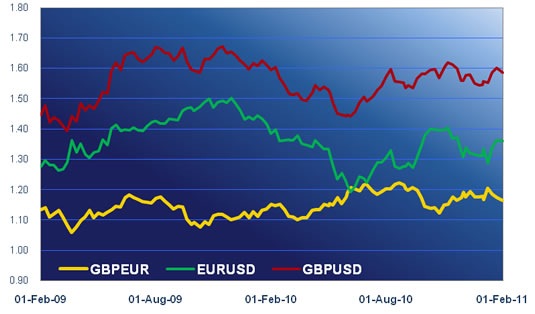Here’s a little test to get the grey matter working on a chilly Wednesday morning. Find the words “one and a half per cent” in the following sentence, extracted from Bank of England governor Mervyn King’s letter to the chancellor yesterday:
“The MPC’s central judgement, under the assumption that Bank Rate increases in line with market expectations, remains that, as the temporary effects of the factors listed above wane, inflation will fall back so that it is about as likely to be above the target as below it two to three years ahead.”
Found it? No? Check out the phrase “under the assumption that Bank Rate increases in line with market expectations”. That’s a heck of an assumption for the governor to make unless he has some idea of what lies ahead. The December short sterling futures* contract – a distillation of market expectations if ever there was one – implies a three month interest rate of 1.76%. Shave off the differential between the overnight rate and the three-month rate and you come to 1.46%. The governor seems to be assuming that Bank Rate will increase to something like that by the end of the year (and, by the same logic, to around 3% by March 2013).
| Technical levels | |||||||||||||
|
|||||||||||||
| Economic releases | |||||||||||||
|
|||||||||||||
It took the market a while to fall in with this notion yesterday morning, partly because the letter did not appear on the Bank’s website at the same time as the ONS published the inflation numbers and partly because the hidden meaning was so cunningly concealed. But once investors had sussed it, they rapidly revised their earlier disappointment that the inflation figures had not been higher. (They were high enough but the 4.0% CPI inflation rate was exactly on target.) Having fallen by half a cent or more against the euro and the US dollar when the numbers were announced, sterling rebounded strongly on the governor’s hint at higher interest rates. The pound starts today a cent and a half higher against the US dollar than Tuesday’s opening level. It is up by one and a half yen, half a euro cent and an average of two cents against the commodity dollars.
The UK inflation figures – or at least the governor’s letter – rather overshadowed the rest of the day’s data. Euroland fourth quarter gross domestic product fell short, with growth of 0.3% instead of than the predicted 0.4%, but investors managed to contain their disappointment. The euro was saved by better than expected results from ZEW’s surveys of German and euro zone economic sentiment. The US dollar took a hit from January’s retail sales figures. Not only were the monthly and annual increases (both 0.3%) well below forecast, the December figures were revised lower too. The NAHB’s housing misery index remained at 16 (on a scale of zero to a hundred) for another month.
Sterling blotted its copybook overnight when Nationwide’s index of UK consumer confidence scored a 47, having been expected to come in at 49 after the previous month’s 54. Although there was no strong reaction to the number it set a vaguely negative tone for London’s opening. It is possible the tone could become yet more negative this morning when the employment numbers are published. The rate of unemployment is predicted to be steady at 7.9% and the claimant count rate is forecast to fall by two or three thousand. In recent months the jobs numbers have tended to paint a picture of a shift towards part-time employment with dispirited ex-workers dropping out of the scene altogether. There is no reason why today’s data should be any more upbeat.
Be prepared also for the governor to pooh-pooh the interpretation of yesterday’s letter to the chancellor when he makes his speech about the quarterly Inflation Report. He is almost certain to make the point that the MPC makes its decisions one at a time. There is not the remotest chance of him committing to a Bank Rate of one-point-anything in December. Some of sterling’s more romantic and less steadfast supporters might find that disappointing.
There are no ecostats due from Euroland today. Canada publishes the figures for manufacturing shipments and international securities transactions. The United States announcements are for building permits, housing starts, industrial production and capacity utilisation. This evening the Federal Open Market Committee releases the minutes of its last policy meeting. Let’s guess they will include the prediction that interest rates will remain at their extremely low level “for an extended time”.
Sterling faces two event risks today, within an hour of each other. Neither is likely to give it the same sort of boost that it received from the governor’s letter yesterday.
*Short term sterling interest rates futures are a non-deliverable proxy for a three month deposit at a time in the future. Their purpose is to provide protection against interest rate movements, not actual loans or deposits. They trade on the Euronext exchange (which started life as LIFFE 30 years ago) priced in terms of 100 minus the interest rate. The December 2011 contract is currently priced at 98.24, implying a 1.76% rate of interest on a three month deposit. Three month deposits currently return roughly a third of a percentage point more than the 0.5% Bank Rate. On that basis the December contract at 1.76% translates into a 1.46% Bank Rate in December.






